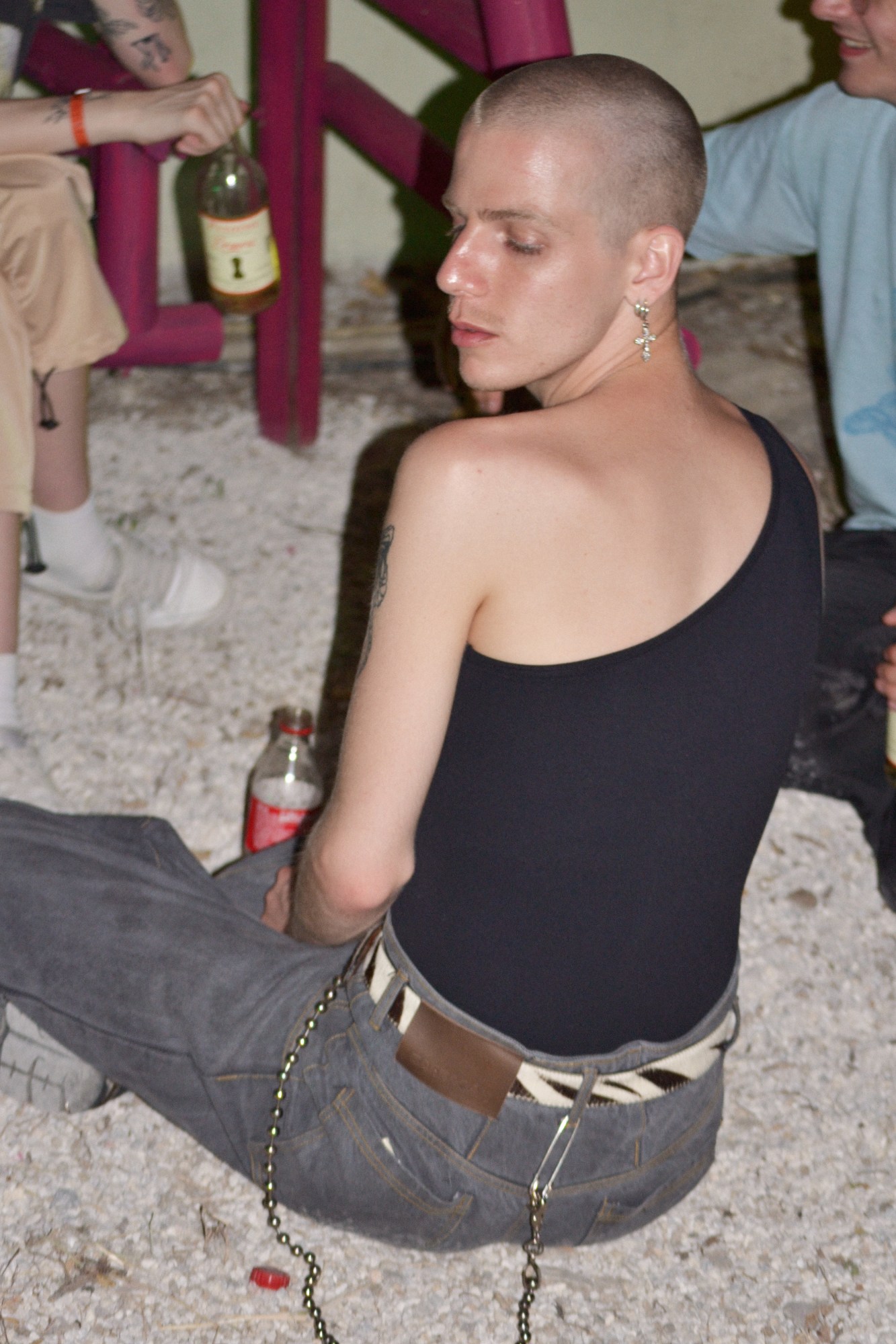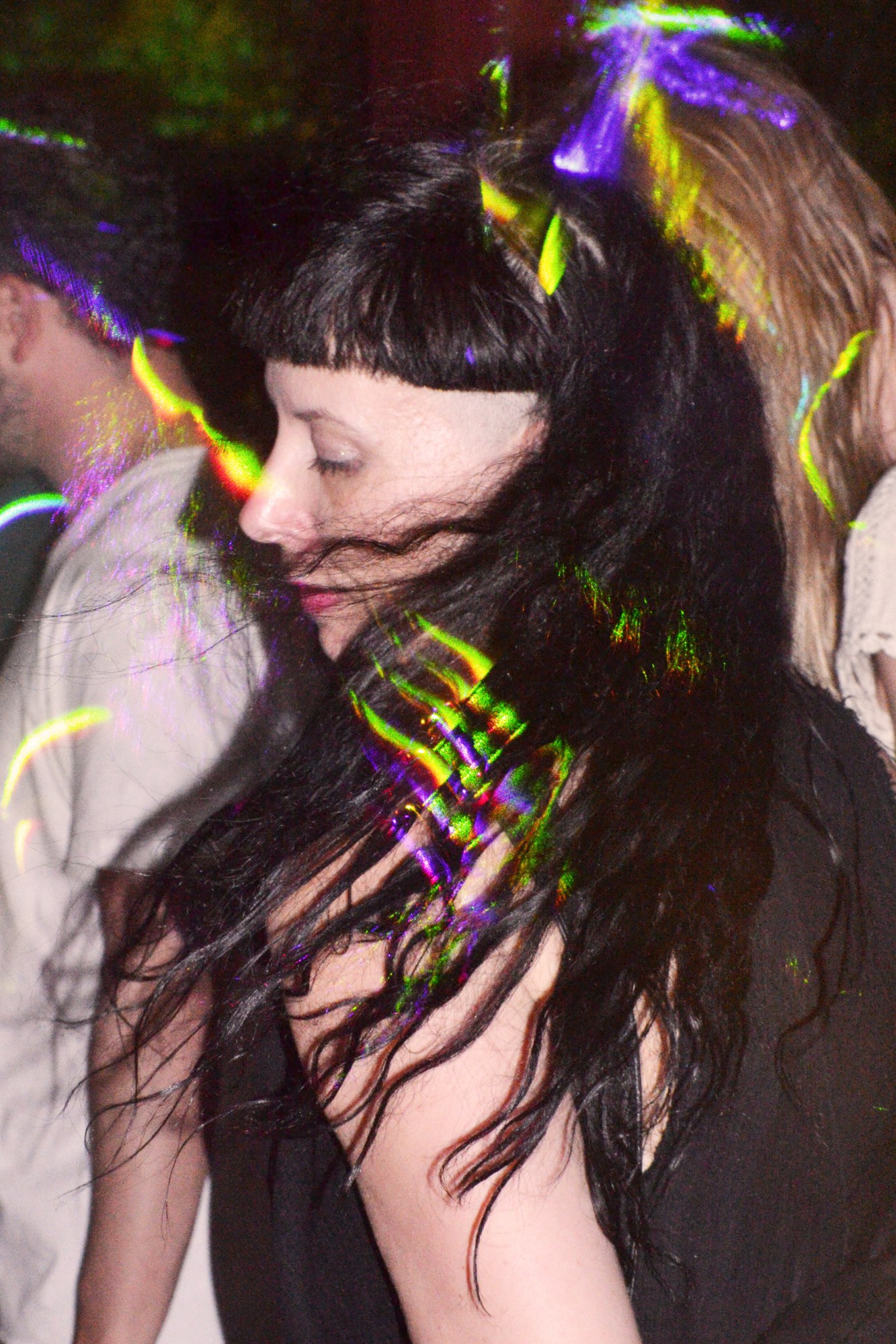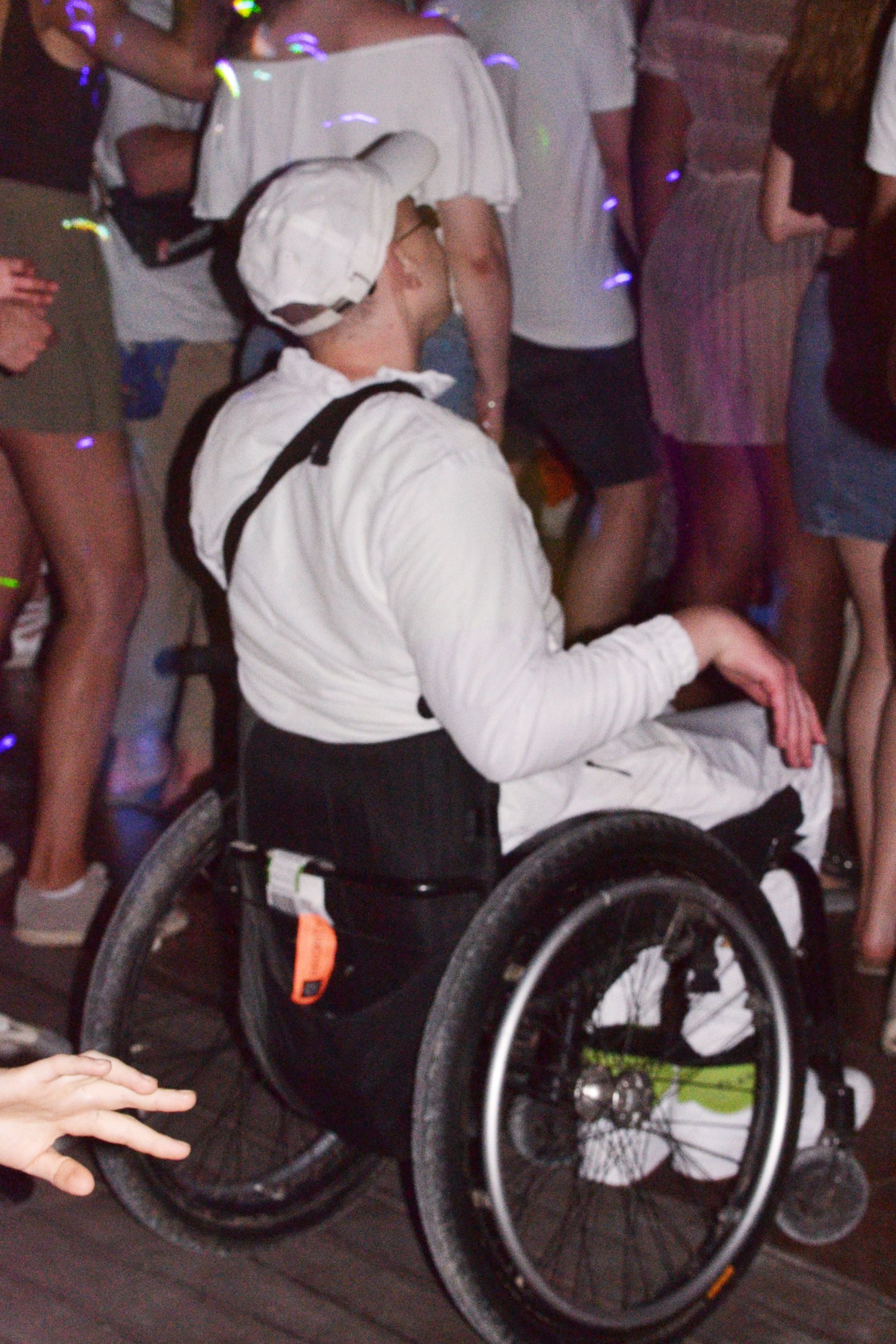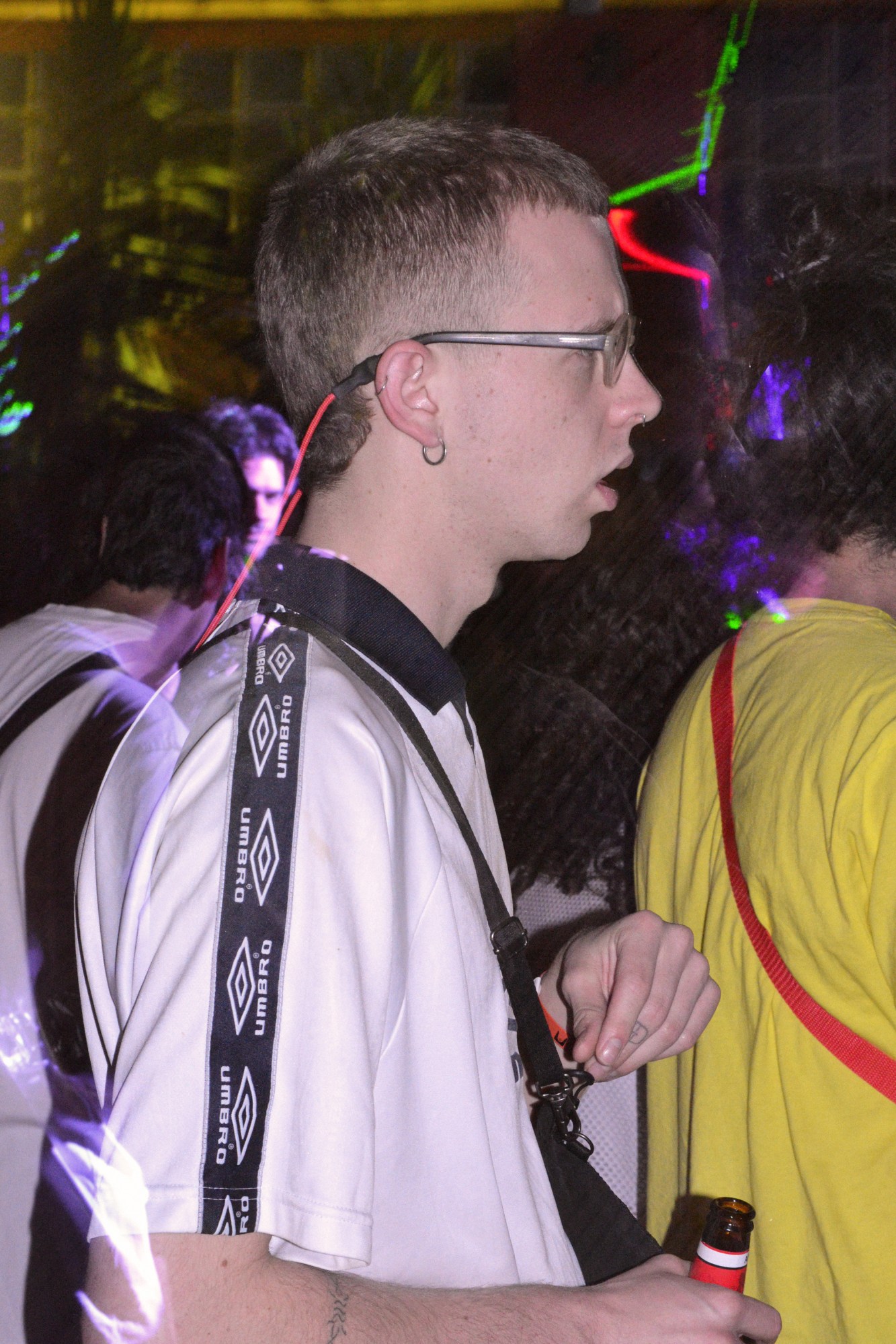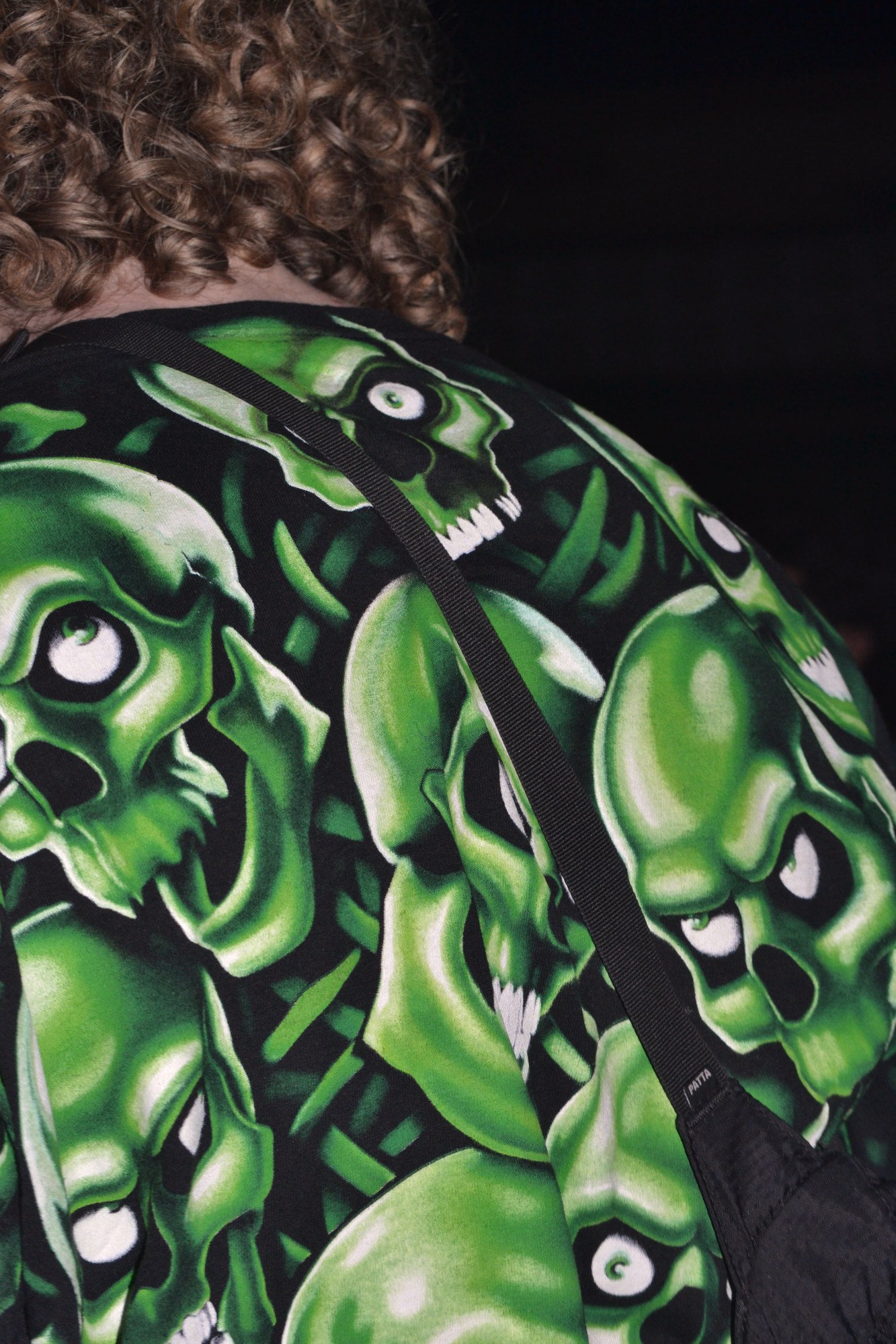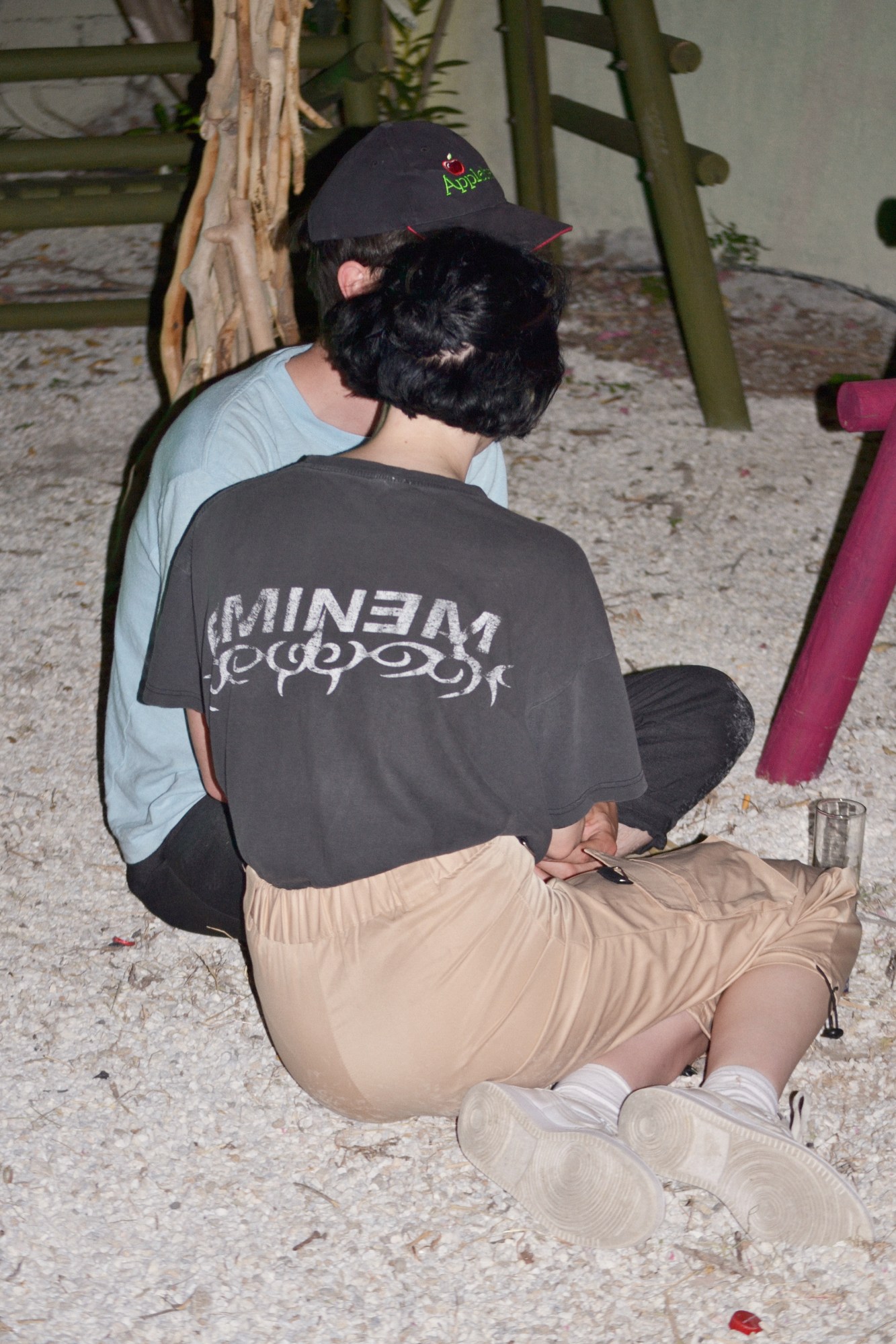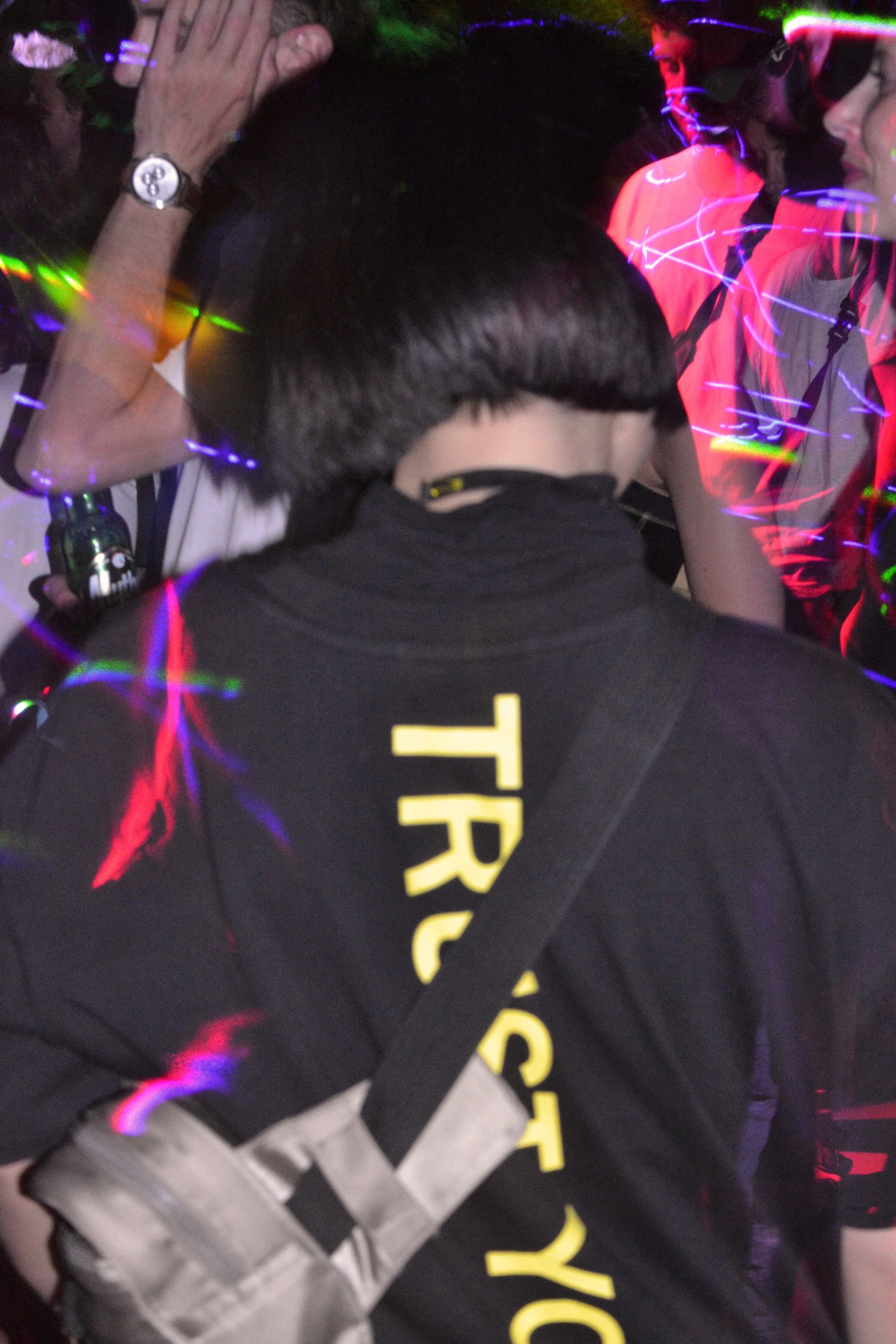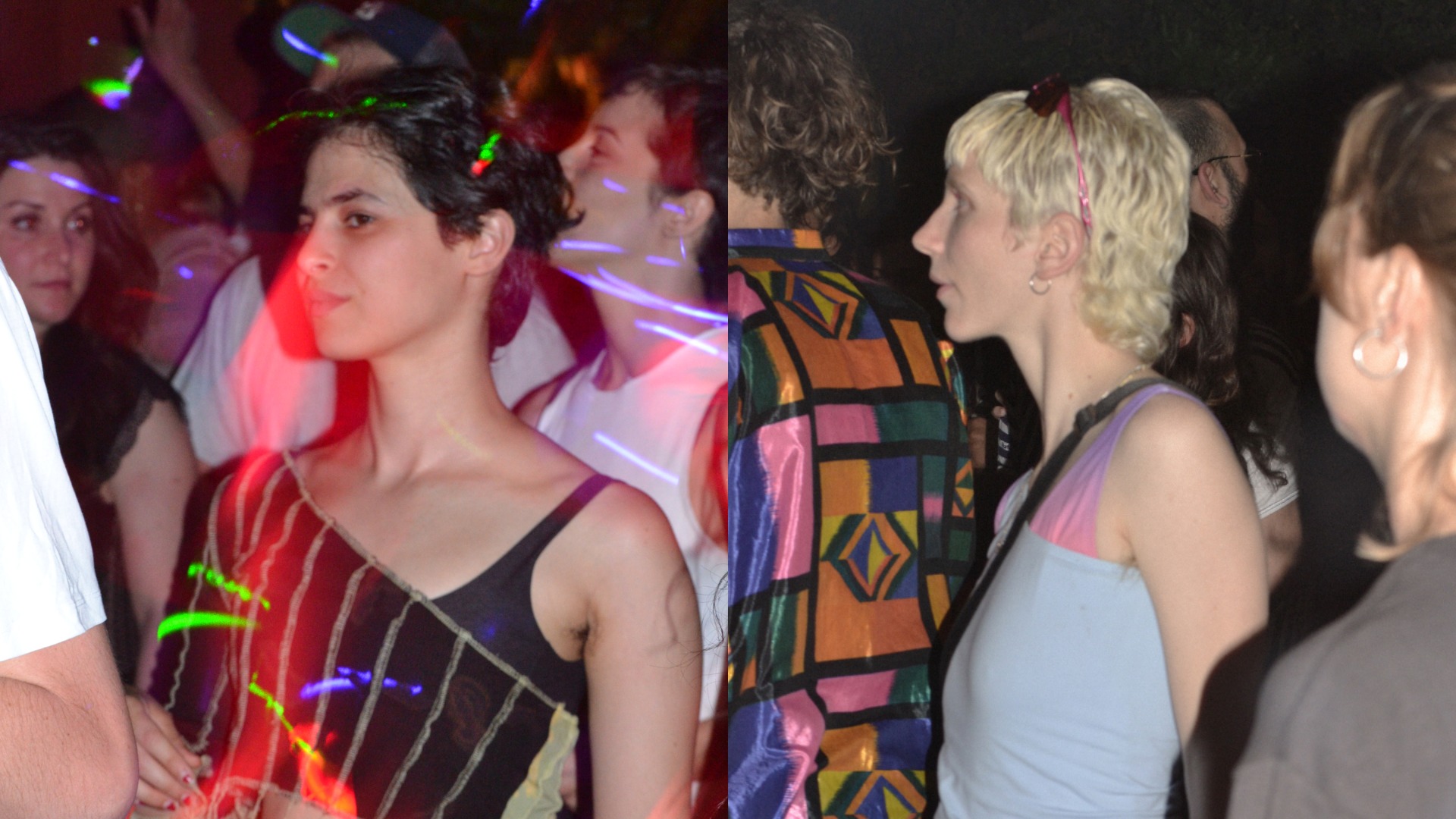I don’t believe in FOMO, but sometimes there are parties that you just can’t miss, especially when you’re sick of the nightlife status quo, and a party comes along that seems to tap into an emerging paradigm shift. For diehard party-chasers like me, the siren song of new rave horizons is impossible to resist. Let me put it this way: I’m sick of going to dark techno parties in gritty warehouses all the time and pretending like I’m living in The Matrix. I think it’s time for something different, and in the era of apocalyptic climate change, I think the future lies in rebuilding rave culture’s relationship to nature. Which is why — when I heard about a new electronic music festival called Nature Loves Courage taking place in a tiny Greek seaside town this month — I obsessed, schemed, and ultimately manifested my way to what I anticipated could be the party of the summer.
A few reasons why I had such high hopes, despite having very little info to go by. The festival’s flyer gave a few promising hints: eschewing the Monster Energy, nu-metal aesthetic of today’s popular rave flyers, it looked more like an ancient scroll, with a Minotaur leaping over hieroglyphic snakes against an earthy background of veiny rocks and sliver of blue ocean. Instead of predicting some creepy dystopian future, this evoked a return to some ancient, primordial roots. The lineup was also impeccably curated, tracing a global network of today’s most exciting club music DJs and heavily skewing femme, queer, and trans. (Even the festival’s logo was a deep U with small concentric circles — probably not a coincidence that it looked like a tit.) When I asked Greek DJ and festival co-founder Abyss X if she thinks women are better DJs, she laughed and said “this isn’t even a question — obviously, the answer is yes.”
So I took the plunge, flying 30 grueling hours through multiple airports, then taking a car through the treacherously winding mountain roads of Crete. I was finally deposited on the pebble beach of Sougia — a tiny village (population: 136) lined with family-owned B&Bs and seafood restaurants. This town felt completely outside 9-to-5 time, existing only in the sweeping arc of the sun. Immediately, the ocean had a meditative effect, its ambient roar drowning out thoughts like a white noise machine, each crashing wave sloughing off stress like dead skin. Soon I was sucked into a soporific daze, my entire central nervous system unclenching as my gaze softened, lids drooping.
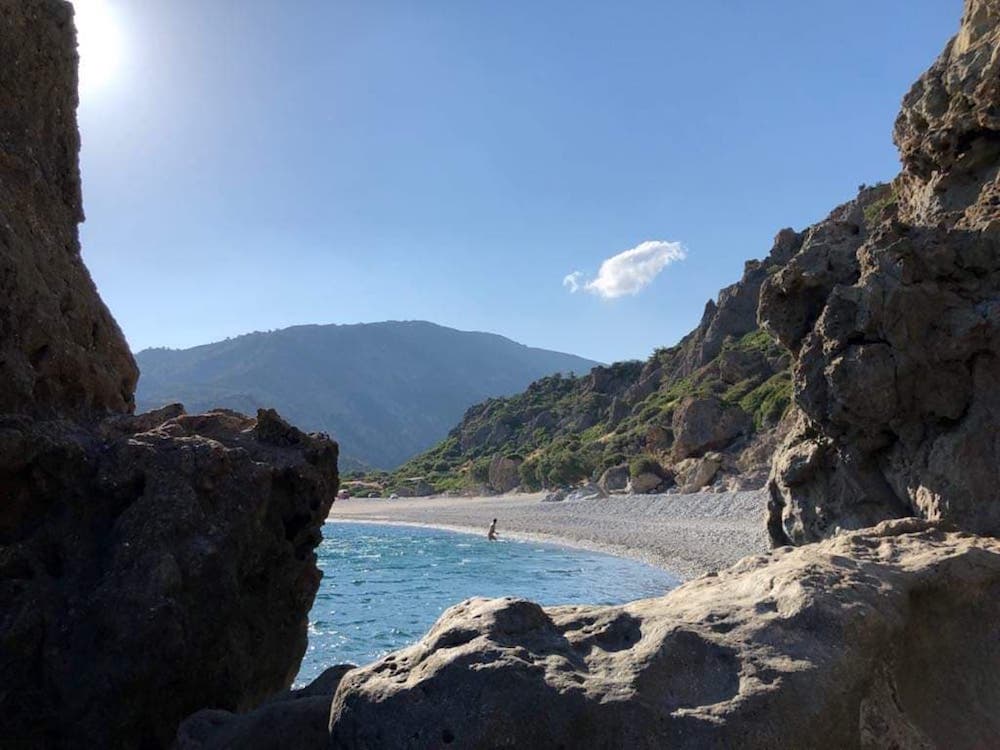
Making my way to the venue, I sauntered through the town’s dirt roads in my tribal beach best: bikini with Hot Wheels flames (part of a Christina Aguilera Halloween costume), purple chainmail top, tie-die sarong from Bali. The few photos I’d dug up of the club on Facebook did not do it justice: the space is magnificent — it looks like an ancient Minoan palace, bordered by crimson red pillars and tribal paintings, with a thatched roof opening up to the night sky and silhouettes of surrounding mountains. Behind the DJ booth, there are bushes of pink bougainvilleas that shake with each gust of wind, spraying their sweet perfume onto the dance floor. When’s the last time you smelled flowers while you were dancing?
That night, everyone trickles in at different times, and there are queer club kids with punky mullets and rhinestone chokers next to old guys from the village in T-shirts and beach shorts. You can spot the locals from their reddish-brown, sunbaked skin, wrinkled and chewy like beef jerky. One older dude in his 50s or 60s stands out from the crowd. He is the first to arrive, and spends the entire evening running around ecstatically, disco fingers jabbing the air, feet shuffling to an inner rhythm. We nickname him “the icon.” Aside from him, however, the crowd seems a little lethargic, unsure of how to get into the groove. Throwing a party is a strange science where a single element — like not enough fog or too many flashing lights — can upset the entire equilibrium, and something feels out of sync, as if the magic of this place hasn’t sunk in. The schedule goes till 9AM but I scamper home at 6AM, sinking into a deep, dreamless sleep.
The next day, I spend the afternoon rolling around staggeringly beautiful pebble beaches and hidden coves like a stupefied whale, eventually making my way back to the club around midnight. Immediately, I can sense that the night is charged with a different energy — fresh arrivals of fabulous Greek club kids are clustered by the entrance, air-kissing each other as they breeze through the door. The air sizzles with anticipation, as if everyone is finally realizing: OK, we’ve made it all the way here, let’s fucking party. DJs Ziur, Nkisi, and Rabit decide to play back-to-back— a spontaneous move that a larger festival would never allow. Their effortless chemistry immediately pops off the dance floor, everyone roiling in a mish-mash of sunburned limbs to crashing waves of syrupy hip-hop, screeching noise, and pummeling techno. Now the elements of this festival are clicking into place, this wild experiment of throwing some of world’s most forward-thinking queer DJs into a remote nightclub where few ravers have been to before, and seeing what happens. I buckle in for the ride.
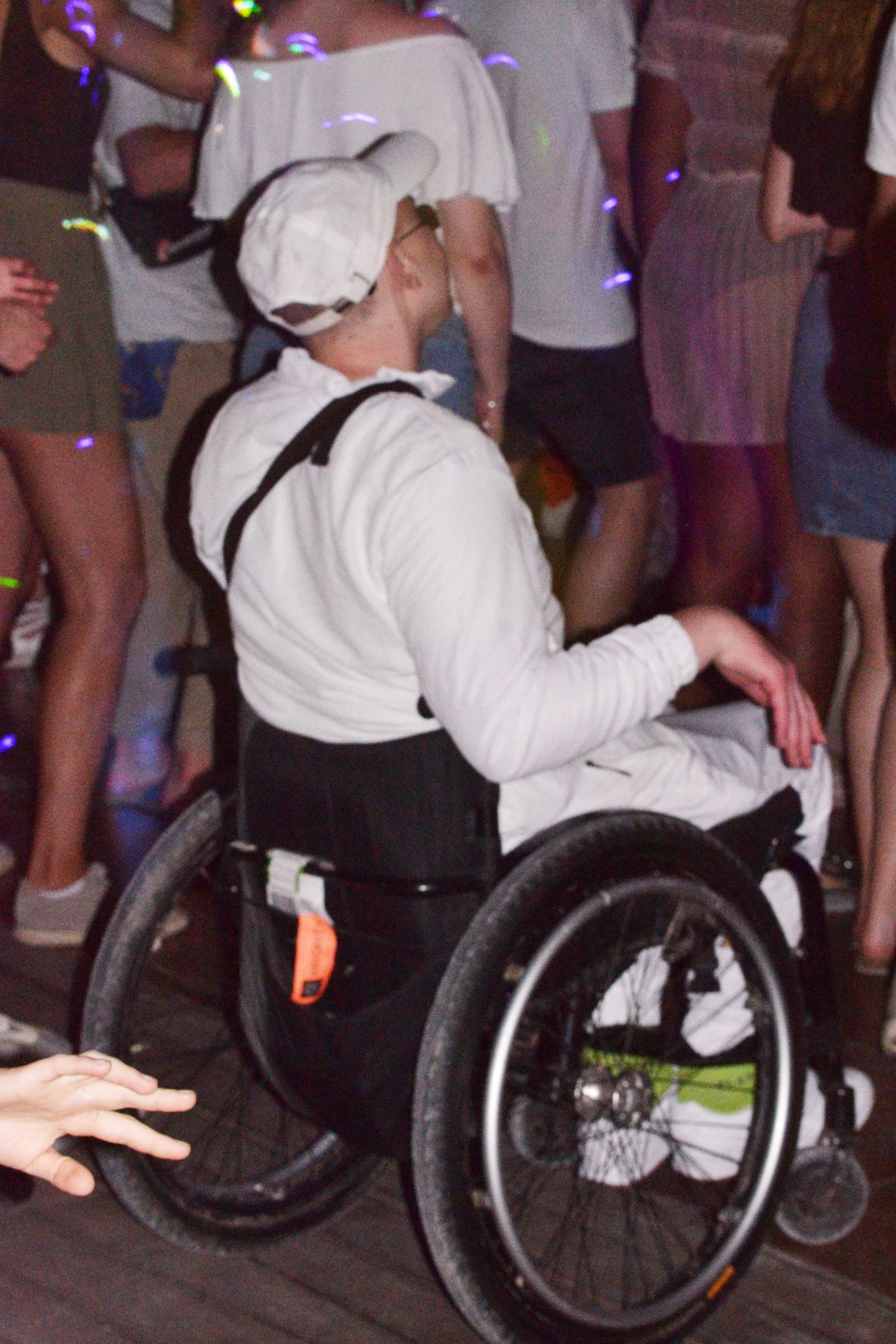
The party careens in a series of ever-ascending peaks, each set more unhinged than the last: pop provocateur SOPHIE slinks on stage in a posh, boxy blazer, unleashing her deconstructed trap bangers with mechanical precision. Juliana Huxtable takes over with a mischievous grin, gripping the CDJs like a weapon and flipping her hair to the supernatural gusts of wind, which billow through the club and nearly sweep us off our feet. At one point I spot some local bros in board shorts walk into the club with their jaws agape, unable to believe their luck at stumbling into this bacchanal, before jumping into the fray themselves.
Dawn breaks with a reggaeton set by Mexico City’s Rosa Pistola — an abrupt but welcome change of pace from the noisy techno that preceded. I spot two androgynous Greek club kids incongruously doing the gabber shuffle to the laid-back reggaeton beats and get the sense that they don’t hear Latin rave music at the club much; someone slinks up to me and whispers, “this is the best set of the night!” When the final act comes on it is fully daylight, and the few dozen dancers still standing are treated to a hardcore set by New York’s Kilbourne, who drowns out the chirping birds with 200BPM rave anthems. By this time the night has exploded into so many climaxes that this final act of full catharsis is almost too much to bear — Juliana Huxtable collapses to her knees to grind on the floor, and Ziur even gets a little misty-eyed.
I hate myself for this reflex, but all night I keep thinking, “this is better than Berghain.” That Berlin club — considered by many to be the paragon of nightlife and the Paradise Garage of our generation — has somehow become the paradigm that all raves are judged against. And although it is still a damn good time, it also embodies that dark and gritty techno monoculture that I’ve become restless with. When ravers in the 90s repurposed abandoned factories in cities like Berlin, they found anarchic freedom in these shadowy boxes of cold concrete. But now, these spaces are starting to feel a little like rotting artifacts of our post-industrial, late-capitalist past. Despite the egalitarian ethos of queer rave culture, the tough, hyper-masculine, and cis-gendered gay clubbers who flood clubs like Berghain in their leather harnesses and jockstraps can also be cold and unwelcoming to outsiders.
Nature Loves Courage was striking proof of what I’d already suspected: that the future of raving lies in nature, where you can feel the wind in your hair and the earth under your feet. The vibe will be psychedelic, and the DJs will be femme and trans, playing genre-agnostic music freed of elitist binaries. And the dance floor will welcome everyone—yes, even boardshort-wearing normies. I know this because I’ve witnessed it, and it brought us to our knees.
